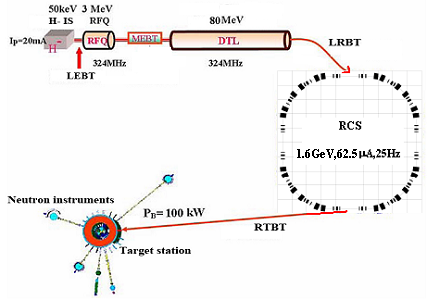Syllabus
| 8:30 - 10:00 |
| Medical Accelerators |
| H. Matsumoto KEK |
| In this session, I will concentrate on accelerator technologies for high intensity proton
accelerators that can be used to realize advanced cancer therapy modalities such as Boron
Neutron Capture Therapy (BNCT). More than 5000 medical accelerators are efficiently working every day around the world providing treatment for various cancers. The majority of these accelerators use electrons, protons or carbon ions to disrupt the DNA chains of tumor cells. They are very efficient against compact tumor structures. However, it is difficult to use them in the case of non-compact or widely disseminated tumors, because of the difficulty in protecting normal cells from the particle knife. Because it does less damage to normal cells, BNCT was proposed in 1932 and the first clinical investigation was carried out at Brookhaven in 1951. --- more |
| 10:20 - 11:50 |
| Beam Cooling |
| A. Noda NIRS |
| Beam cooling has been invented by a strong motive force to create a good quality beam manageable by an accelerator utilizing secondary produced anti-protons. Electron cooling was invented by Budker for this purpose, which played an important role to make precise investigation with cooled beam. The role however, to create an antiproton beam to realize p- A laser cooling already successfully applied to stationary atoms and molecules, has also been extended to an ion beams circulating in a storage ring, although its cooling efficiency had been mainly limited to the beam direction, which is now being to be extended to the transverse directions with the use of synchro-betatron coupling resonance. (SBRC). Compared to passive scheme to use Intra-beam scattering to cool down the transverse temperature, the scheme using SBRC is an active scheme and its indirect transverse cooling efficiency has been, recently,. Experimentally demonstrated to be drastically improved by reduction of the beam intensity with scraping. In the present lecture, the outline and the present status of these approaches of beam cooling above mentioned are to be given. |
| 13:00 - 14:30 |
| Ion and Electron Sources |
| Martin P. Stockli Oak Ridge National Lab. |
| The starting point of every accelerator is an electron- or an ion-source, which produces the charged particles that are subsequently accelerated. State of the art accelerators depend on state of the art electron- or ion-sources to produce the required large quantity of charged particles and to form a beam that is within the acceptance of the subsequent accelerator. After a brief historical introduction, the presentation reviews the basic physical processes that produce the free electrons and ions in a near-vacuum environment. Those processes are illustrated with classical ion and electron sources. The discussion then turns to electrical discharges and plasma, which are required to produce the high-intensity ion beams for today’s high-current accelerators. This leads to a discussion of lifetime limitations and the reasons that they are so different for different sources. Understanding those fundamental issues explains the success stories, which have been achieved with proton sources, with sources for highly charged ions, and with sources for negative hydrogen ions. The presentation concludes with photoinjectors, the technology developed for high-brightness electron beams. |
| 14:50 - 16:20 |
| CSNS |
| S. Fu IHEP |
| CSNS (China Spallation Neutron Source) accelerator provides an intense proton beam on a solid-state heavy metal target to produce spallation neutrons which are cold down and then used as a special tool to probe material microscopic structure and dynamics, functioning as a complement to synchrotron radiation. In this lecture, a brief overview of the spallation neutron sources in the world will be introduced. More details on the physics design of the CSNS will then be presented. CSNS accelerator consists of an H- ion linac of 80 MeV and a rapid cycling synchrotron of 1.6 GeV with a repetition rate of 25 Hz, as shown in Figure 1. It provides 100 kW proton beam power on the target in the first phase and will be upgraded to 500 kW in the second phase by increasing the linac energy to 250 MeV and average beam current 5 times. As an intense beam proton machine, beam loss control is a great challenge in the physics design of both the linac and the synchrotron. This lecture will focus on the issue to discuss the beam dynamics design and technology design. Key technology is another important issue for building such a high power machine. Some R&D activities on the key technologies will be introduced in this lecture, including some major hardware design and prototype development, such as H- ion source, fast LEBT chopper, DTL tank, LLRF for linac, ring magnet and its power supply, ferrite-loaded RF cavity, ceramic vacuum chamber, etc. From this lecture, students can learn the major design and development method in an intense beam accelerator project, taking CSNS accelerator as an example.
|

